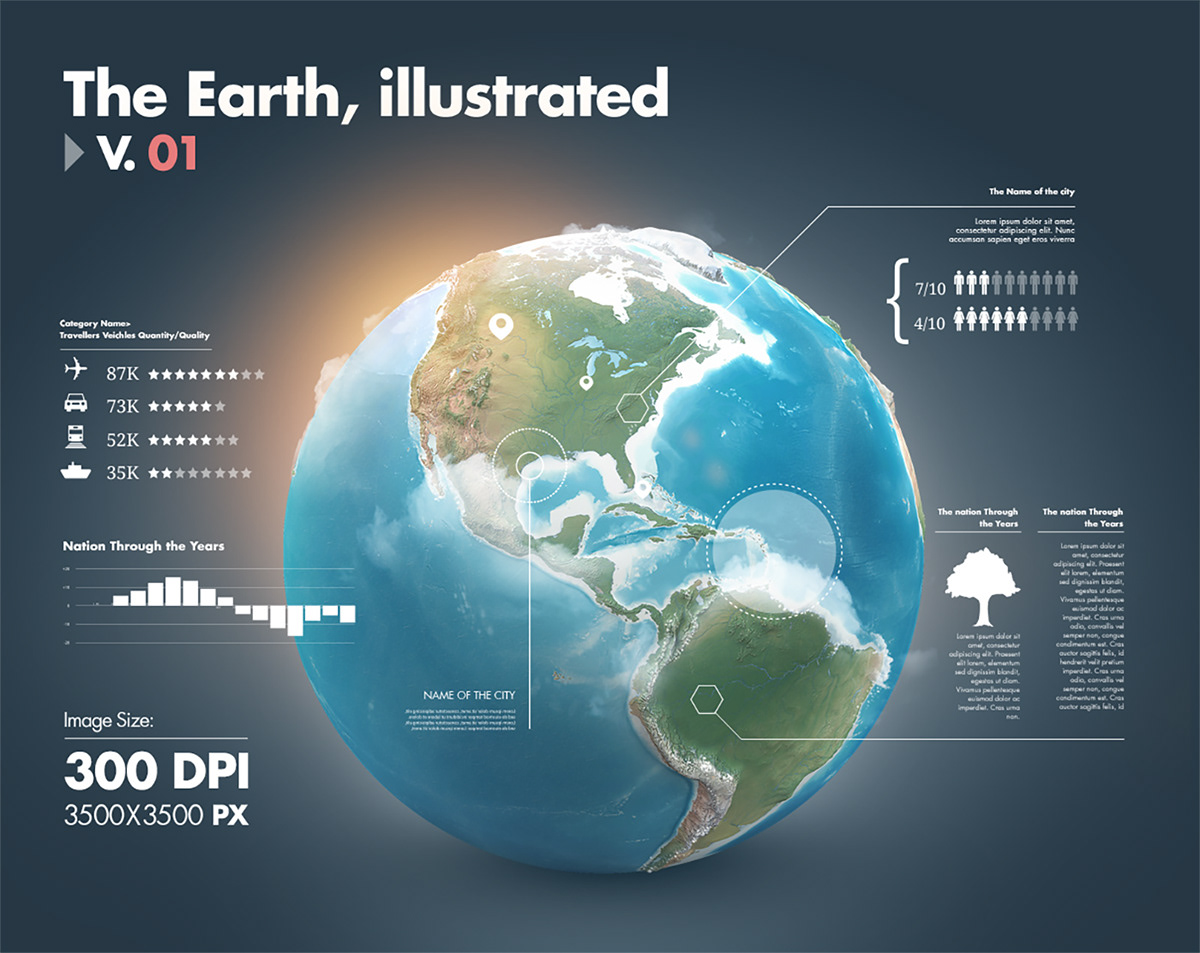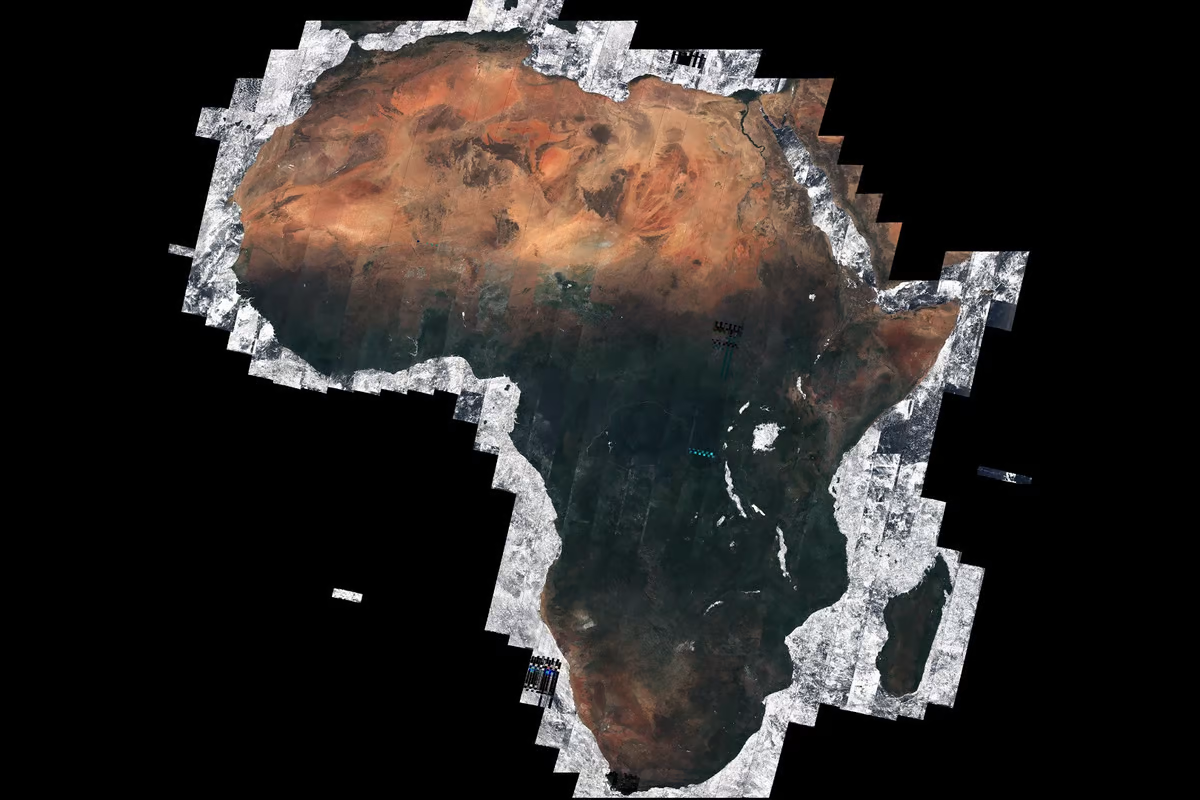Discover Earth
Exploring the Wonders of Our Planet
Overview
Earth, the third planet from the Sun, is a vibrant world with diverse ecosystems, cultures, and landscapes. It is unique in its ability to support life.
- Diameter: 12,742 km
- Age: 4.5 billion years
- Surface Area: 510 million km²
- Population: 8 billion (approx.)

Geography

Asia
The largest and most populous continent.

Africa
Home to the world’s oldest civilizations.

Europe
Rich in history and culture.
History
4.5 Billion Years Ago
Earth forms from the solar nebula.
3.8 Billion Years Ago
The first signs of life emerge.
65 Million Years Ago
A meteor strike causes the extinction of dinosaurs.
Fun Facts
Discover amazing facts about our planet:
- Earth is 70% water.
- The Great Barrier Reef is the world’s largest living structure.
- Mount Everest grows by 4mm every year.
Warning: Undefined array key "Date" in /home/u690321641/domains/myindiatimes.com/public_html/earth.php on line 219
Warning: Undefined array key "Date" in /home/u690321641/domains/myindiatimes.com/public_html/earth.php on line 219
Earth News

NASA Raises Probability of 'City Killer' Asteroid Impact to 3.1%: Should We Be Worried?
A recent update from NASA has sent ripples across the scientific community and the public alike. The space agency has increased the probability of asteroid 2024 YR4 striking Earth in 2032 to 3.1%—a significant jump from earlier predictions. While the odds may seem alarming, experts assure that the situation is being closely monitored and should not be a cause for immediate concern.
What Is Asteroid 2024 YR4?
Asteroid 2024 YR4, a celestial body measuring between 40 to 90 meters in diameter, was first detected on December 27, 2023, by the El Sauce Observatory in Chile. This space rock belongs to the category of Near-Earth Objects (NEOs), which are asteroids or comets that orbit close to our planet. Since its discovery, scientists have been tracking its trajectory, refining impact probabilities, and assessing potential consequences.
Initially, NASA's Centre for Near Earth Object Studies (CNEOS) estimated the asteroid's likelihood of collision at 1% in January 2024. By February, this increased to 2.6%, and now it stands at 3.1%, equivalent to a 1 in 32 chance of impact. While the probability appears to be on the rise, astronomers emphasize that this trend is common in the early stages of asteroid tracking and is expected to decrease with further observations.
How Dangerous Is 2024 YR4?
The term “city killer” has been attached to this asteroid due to its size and potential impact. Unlike planet-wide catastrophic events, which require asteroids measuring several kilometers in diameter, 2024 YR4 is relatively small. However, its potential effects on a densely populated area could still be devastating.
If 2024 YR4 were to enter Earth's atmosphere, it could trigger an airburst—a phenomenon where an asteroid explodes mid-air before reaching the surface. The energy released in such an event could be equivalent to around eight megatons of TNT. To put this into perspective, this would be over 500 times the power of the Hiroshima atomic bomb. If the asteroid were to survive atmospheric entry and make direct contact with Earth's surface, it could leave a crater measuring between 1,640 and 6,500 feet in diameter, enough to cause widespread destruction to a city-sized area.
Should We Be Worried?
Despite the seemingly increasing probability of impact, scientists urge people not to panic. Bruce Betts, chief scientist at the Planetary Society, reassures the public, saying, "I'm not panicking. Naturally, when you see the percentages go up, it doesn't make you feel warm and fuzzy, but the likelihood is still relatively low."
Historically, early predictions of asteroid impacts tend to fluctuate as astronomers gather more data. More often than not, the probability of impact eventually drops to zero. A notable example is the Apophis asteroid, which in 2004 was estimated to have a 2.7% chance of hitting Earth in 2029. However, with improved tracking and analysis, the risk was completely ruled out.
Similarly, experts believe that as we continue monitoring 2024 YR4, further calculations may significantly reduce or even eliminate the risk of collision altogether.
Potential Impact Date and Future Tracking
According to NASA’s latest trajectory models, if 2024 YR4 were to impact Earth, the most likely date would be December 22, 2032. As of now, the asteroid is moving away from Earth and is expected to disappear from telescopes' radars by April 2024. Scientists will have another opportunity to observe it closely in 2028 when it reappears in our skies.
The limited time for current observations makes this period crucial for astronomers. Tracking the asteroid’s movement and refining its orbital path will help provide a more accurate risk assessment in the coming years.
Defensive Measures: Can We Stop an Asteroid?
Given the increasing ability of space agencies to detect potential threats, planetary defense has become a serious field of research. NASA and other space organizations are working on multiple strategies to mitigate asteroid threats:
1. Kinetic Impact Deflection
One of the most promising methods of asteroid deflection is the kinetic impactor technique, where a spacecraft deliberately crashes into an asteroid to alter its trajectory. NASA successfully demonstrated this with its Double Asteroid Redirection Test (DART) mission in 2022, changing the orbit of the asteroid Dimorphos.
2. Gravity Tractors
A gravity tractor involves positioning a spacecraft near an asteroid, using the force of gravity to slowly pull it into a different orbit. While this method requires significant time and resources, it could be effective for long-term threats.
3. Nuclear Detonations
As a last resort, nuclear explosions could be used to either destroy an asteroid or nudge it off course. However, this approach comes with risks, including fragmenting the asteroid into smaller but still dangerous pieces.
4. Laser Ablation
Lasers could be used to heat an asteroid's surface, causing material to vaporize and create thrust. This method is still in experimental stages but holds promise for future planetary defense strategies.
Lessons from Past Asteroid Events
Throughout history, Earth has been struck by numerous asteroids, some causing significant damage. The 2013 Chelyabinsk meteor event serves as a recent example. A 20-meter asteroid entered Earth's atmosphere over Russia and exploded midair with a force of about 30 times that of the Hiroshima bomb. The resulting shockwave shattered windows and injured over 1,600 people, but fortunately, no deaths occurred.
Larger asteroid impacts have been responsible for mass extinctions, such as the Chicxulub impact 66 million years ago, which contributed to the extinction of the dinosaurs. However, city-killer asteroids like 2024 YR4, while dangerous, do not pose a threat on that scale.
Public Awareness and Scientific Advancements
The study of asteroids and planetary defense has improved significantly in recent years. Public interest in space threats has grown, leading to increased funding and research in asteroid detection and deflection technologies. NASA, along with international space agencies like the European Space Agency (ESA) and China’s CNSA, continues to work on advancing early detection systems.
Additionally, private space companies such as SpaceX are exploring technologies that could contribute to planetary defense. With continued scientific advancements, humanity is better prepared than ever to detect and potentially prevent catastrophic asteroid impacts.
Conclusion: Stay Informed, Not Alarmed
While the idea of a 'city killer' asteroid may sound terrifying, experts advise against fear-mongering. The 3.1% impact probability is still relatively low, and history has shown that refined calculations often lower these odds. Scientists will continue to track 2024 YR4, gathering more data to make precise predictions.
Asteroids like 2024 YR4 serve as reminders of the importance of space research and planetary defense. While we are far from being in any immediate danger, such events push humanity to invest further in technology that could one day save millions of lives.
For now, we can rest assured that the world's brightest minds are on the case, ensuring that Earth remains safe from cosmic threats. Keep an eye on future updates, but there's no need to panic just yet.


